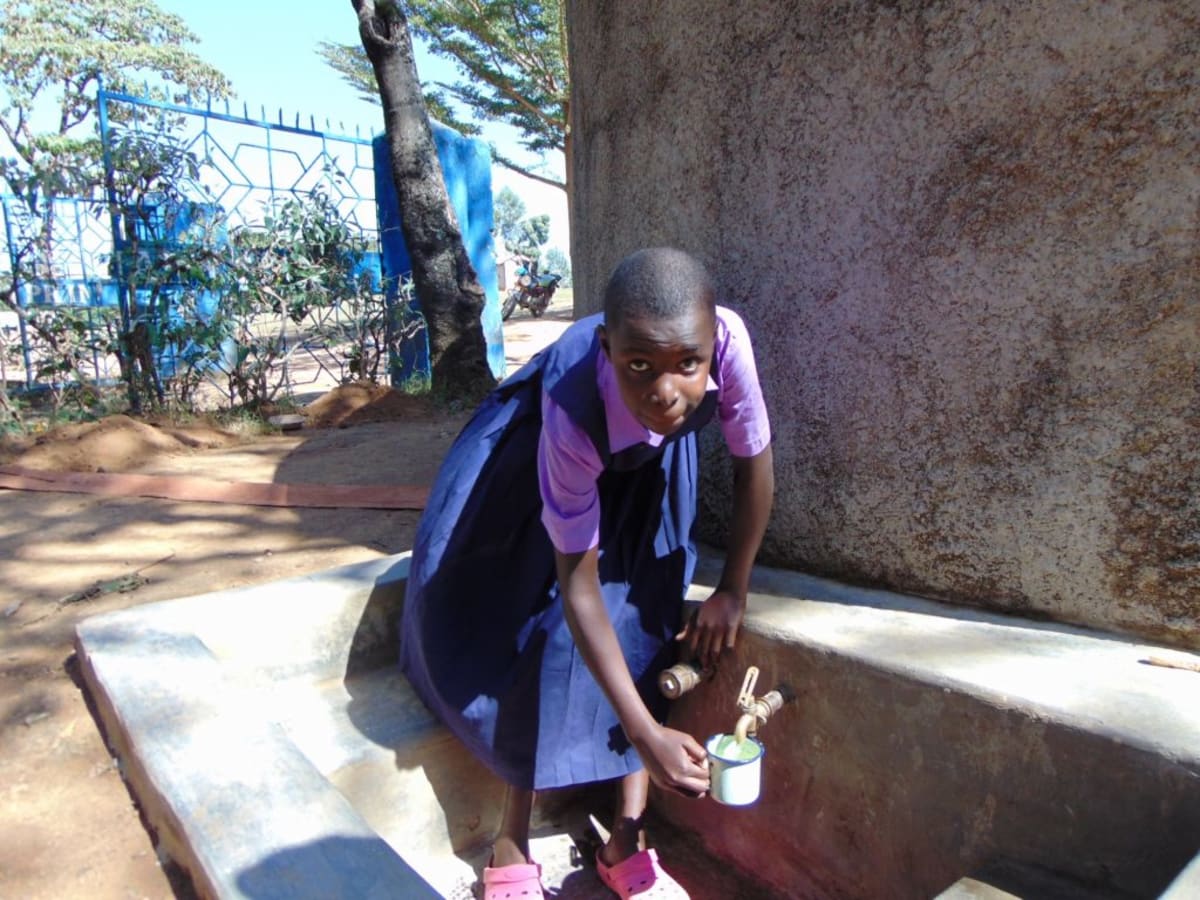Ematetie Primary School opened in 1973. It starts each weekday at 7am, when students arrive. They carry out normal chores around the compound like collecting litter and piling it behind the classrooms. The pupils then gather for morning assembly at 7:30, when they sing songs and listen to announcements. Morning classes start at 8am and go until lunch. Afternoon classes go until 3:30pm, when students are required to stay for an hour of sports or special interest clubs like poetry or debate.
373 students attend here, and the school employs 14 teachers. There are also three support staff.
Water
There is no source of water on school grounds. The school asks that each student bring their own container of water to get by each day, which is used for drinking and cooking school lunch. There is never enough water to clean with, though.
When students arrive with their five to 10 liters of water, it's poured in 100-liter plastic containers by the classrooms and in the kitchen. Because these students find their water at many different places, there's no way to ensure its quality. But because students are suffering from diarrhea and stomachaches, we know that this water is coming from contaminated, open sources. We even found out that the cook is dunking the same cup over and over again in the storage barrel, without ever cleaning that cup.
Sanitation
There are only six pit latrines on school grounds, far less than what about 350 students need. They are in bad condition, and a number of them have broken doors. We noticed that students also come to school in bare feet, which is very dangerous with such dirty latrine floors. Some of the girls' latrine pits have collapsed, and so they're temporarily allowed to use the neighboring church's latrines. Because of these poor conditions, we realized that open defecation is an issue.
There are hand-washing stations (containers fitted with taps), but they are not filled because of the severe water shortage.
The county health department recently visited the school and after seeing the conditions, issued a closure notice. If nothing is done to alleviate these issues, the school must close its gate to students.
Here's what we're going to do about it:
Training
Training will be held for two days. The facilitator will use PHAST (participatory hygiene and sanitation transformation), ABCD (asset-based community development), CTC (child to child), lectures, group discussions, and handouts to teach health topics and ways to promote good practices within the school. The CTC method will prepare students to lead other students into healthy habits, as well as kickstart a CTC club for the school.
Hand-Washing Stations
This CTC club will oversee the new facilities, such as hand-washing stations, and make sure they are kept clean and in working condition. The two hand-washing stations will be delivered to the school, and the club will fill them with water on a daily basis and make sure there is always a cleaning agent such as soap or ash.
VIP Latrines
Two triple-door latrines will be constructed with local materials that the school will help gather. Three doors will serve the girls while the other three serve the boys. And with a new source of water on school grounds, students and staff should have enough to keep these new latrines clean.
Rainwater Catchment Tank
A 50,000-liter rainwater catchment tank will help alleviate the water crisis at this school. The school will also help gather the needed materials such as sand, rocks, and water from the spring for mixing cement. Once finished, this tank can begin catching rainfall that will be used by the school’s students and staff. Students will no longer be responsible to find enough water to carry to school every day.
Teacher Teresa Ndeta said that this "project has come in at the very right time!" With this intervention, the school will be able to provide for its students and will no longer have to turn them away. We and the school strongly believe that with this assistance, standards will significantly improve. These higher standards will translate to better academic performance!
This project is a part of our shared program with Western Water And Sanitation Forum (WEWASAFO). Our team is pleased to provide the reports for this project (formatted and edited for readability) thanks to the hard work of our friends in Kenya.

 Rainwater Catchment
Rainwater Catchment
 Rehabilitation Project
Rehabilitation Project































